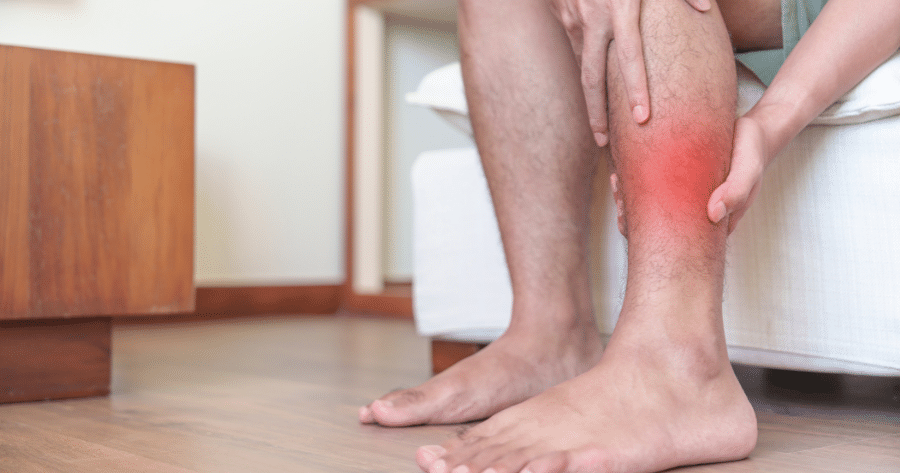Shin Splints Specialist in Chicago, IL
Board-Certified Sports Medicine Specialist for Expert Shin Splints Treatment

Athletes are all too familiar with that sharp pain that starts after a long run, during a big game, or a workout: shin splints. Shin splints, medically known as medial tibial stress syndrome, are a common condition that causes pain along the shinbone (tibia). This condition frequently affects runners, athletes, and individuals who engage in repetitive impact activities. Shin splints occur when the muscles, tendons, and bone tissue around the tibia become inflamed due to excessive stress. At Suburban Orthopaedics, our expert sports medicine team provides comprehensive care to diagnose, treat, and prevent shin splints, helping patients return to pain-free activities.
Why Do I Get Shin Splints?
When repetitive stress is placed on the shinbone and surrounding tissues, shin splints develop. This often results from sudden increases in exercise intensity, improper footwear, running on hard surfaces, or biomechanical imbalances such as flat feet or high arches. Individuals who participate in high-impact activities, such as running, dancing, and military training, are at higher risk of developing this condition. The pain associated with shin splints is typically felt along the inner part of the shin and may worsen with physical activity. Over time, without proper intervention, shin splints can lead to more severe conditions, such as stress fractures.
Symptoms of Shin Splints
Shin splints are primarily caused by overuse and repetitive stress on the lower leg. Factors contributing to this condition include excessive running or jumping, sudden increases in training intensity, poor footwear that lacks support, and improper running or walking mechanics. Muscle imbalances and tight calf muscles can also increase strain on the shinbone, exacerbating the problem. Individuals with shin splints often experience aching or throbbing pain along the inner shin, tenderness and swelling in the affected area, and discomfort that worsens during or after exercise. In more severe cases, pain may persist even during rest.
Talk to your Suburban Orthopaedics provider and your coaches or trainers if you’re experiencing any of the above symptoms or if your shin splints are becoming more frequent. They may be able to modify your training to prevent shin splints from worsening.
How Can I Treat Shin Splints?
At Suburban Orthopaedics, our specialists diagnose shin splints by conducting a thorough physical examination and reviewing the patient’s medical history. In some cases, imaging tests, such as X-rays or MRIs, may be utilized to rule out stress fractures or other underlying conditions.
Treatment focuses on reducing inflammation, alleviating pain, and preventing recurrence. It is crucial to rest and modify activities to allow the tissues to heal correctly. Ice therapy is often recommended to help reduce swelling and pain.
Supportive footwear and orthotics can help correct biomechanical issues while providing adequate cushioning for the feet. Physical therapy is essential for recovery, focusing on targeted exercises to strengthen the lower leg muscles, improve flexibility, and enhance overall biomechanics. Pain management options, such as anti-inflammatory medications, may also be utilized to relieve discomfort. Further evaluation and customized rehabilitation plans may be necessary if symptoms persist despite conservative treatment.
Can I Prevent Shin Splints?
Recovery and prevention are key strategies in avoiding recurrent and worsening shin splints. Our physical therapists develop personalized treatment plans to strengthen the lower leg muscles, improve flexibility, and optimize movement patterns. Stretching exercises, particularly for the calves and Achilles tendon, help relieve tension in the shin area.
Strengthening the foot and ankle muscles enhances stability and reduces stress on the tibia. Gradual progression in training intensity, rather than abrupt increases, allows the body to adapt to physical demands without overloading the lower leg. Consider low-impact training like cycling, swimming, Tai Chi, or yoga. Talk to your Suburban Ortopaedics physician, extender, or sports medicine provider and your coach to work on modifying your training to prevent shin splints.
Shin Splint Treatment and Prevention at Suburban Orthopaedics Sports Medicine
Early intervention and proper treatment can prevent shin splints from becoming chronic, ensuring you remain active and pain-free. If you are experiencing symptoms of shin splints, contact Suburban Orthopaedics today to schedule an appointment with our sports medicine team.
Request an Appointment
At Suburban Orthopaedics, our providers are here to help you. Set up an appointment today.
